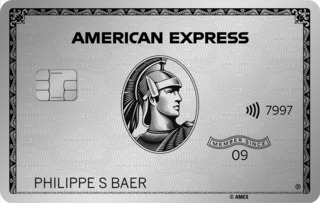The list of ways that you can pay for goods and services keeps getting bigger as new online and mobile services become available. For Swiss consumers, keeping a clear overview of payments is becoming increasingly difficult. In this guide, moneyland.ch explains the properties of the most relevant payment methods available in Switzerland, and the advantages and disadvantages of each.
For each payment method, there are small differences in acceptance. Even if a payment method is widely accepted, you may still be unable to use it to pay for some purchases. Some shops and restaurants do not accept credit cards. Rental car companies, on the other hand, may only accept credit cards, and not debit cards or prepaid cards. While you can generally pay for online hotel bookings using a debit card or prepaid card, some hotels require a credit card when you check in. There are also merchants who accept payments with debit cards, but not with credit cards. At many farm stands, market stalls, and alpine lodges, Twint is the only accepted cashless payment method.
Tip: Using a variety of different payment methods can help you avoid complications. Carry both a debit card and a credit card. Ideally one card should use Visa, and the other Mastercard. That way, if one payment method does not work, you can use a different one.
The pros and cons of cash
Cash is king: Banknotes and coins are the most popular payment method in Switzerland. The moneyland.ch Swiss payments survey shows that 67 percent of residents consider cash to be completely indispensable, while 96 percent use cash for payments.
The biggest advantages:
- Anonymity: Unlike payments made using cards and apps, transactions made using cash are not recorded in a way that can be used to harvest data about you as an individual.
- Control over spending: Because you have to withdraw cash in advance, you can only ever spend as much cash as you have with you. That makes it easier to avoid impulse spending and overspending.
The biggest disadvantages:
- Hygiene: In terms of hygiene, coins and banknotes are not the optimal payment method.
- Loss: Cash is relatively vulnerable to theft or loss.
- Online payments: You generally cannot use cash when making payments at online stores.
The detailed guide to the pros and cons of cash provides more information.
How can I find out which kind of payment card I have?
For many people, it can be difficult to recognize a card’s type just by looking at it. A card imprinted with a Mastercard or Visa logo may be a credit card, a prepaid card, or a debit card. The deciding factor is a word printed on the card in fine print. If the word debit is printed on the card, then it is a debit card. The word prepaid shows that it is a prepaid card. If the card either has the word credit on it, or none of these words at all, then it is a credit card.
The pros and cons of debit cards
Purchases with a debit card are charged directly to your bank account. Debit cards are very popular in Switzerland. A high 71 percent of participants in a moneyland.ch survey consider debit cards to be completely indispensable – making them even less dispensable than cash. 91 percent of participants use debit cards to make payments at brick-and-mortar merchants, and 50 percent use them to pay for online purchases.
The biggest advantages:
- Direct debiting: Every purchase is debited directly from your bank account. You generally cannot spend more money than is available in your account.
- Contact-free payments: Contactless payments up to 80 Swiss francs (100 francs with the Postfinance Card) do not require authentication with a PIN code in Switzerland.
- Cheaper cash withdrawals: Debit cards normally do not have high fees and charges for cash withdrawals. Swiss banks generally do not charge any fees at all when you withdraw Swiss francs from your bank’s ATMs.
- Online payments: The Debit Mastercard, Visa Debit, and the Postfinance Card with a Mastercard logo can be used to pay at online shops in many countries. The older Maestro and V pay cards, and the Postfinance card without the Mastercard logo, either cannot be used for online purchases, or are only accepted by a very limited number of online stores.
The biggest disadvantages:
- Fraud: If your card is stolen, third parties can use it to make contact-free purchases without having to know the PIN. It is also possible for criminals to copy card information from the magnetic stripe (skimming).
- Costs: Debit cards may have an annual fee, as well as fees for cash withdrawals in Switzerland and/or abroad, and foreign transaction fees for payments to merchants in other countries.
- Few cardholder benefits: Unlike credit cards, debit cards normally do not include special cardholder benefits like rewards for spending, or complimentary insurance.
The pros and cons of credit cards
Purchases made using a credit card are paid for by a card issuer, which then bills you for the total of all payments (normally at the end of each month). A representative survey conducted by moneyland.ch shows that 71 percent of Swiss consider credit cards to be somewhat or completely indispensable. 84 percent of consumers use credit cards to pay at brick-and-mortar merchants, and 80 percent use them to pay online.
The biggest advantages:
- Cardholder benefits: Many credit cards come with many perks, including reward programs and complimentary insurance.
- Contact-free payments: Nearly all credit cards can be used for contactless payments. In Switzerland, you can spend up to 80 francs per contactless purchase without entering a PIN code.
- Online payments: The vast majority of online shops accept credit card payments.
- Purchases in Switzerland: For making payments at Swiss merchants, certain Swiss credit cards are the most favorable payment method of all because of their cash back or other rewards.
The biggest disadvantages:
- Expensive cash withdrawals: Credit cards generally have very high fees and charges for cash withdrawals, so using them for this purpose is not recommended.
- Costs: Many credit cards have annual card fees, fees for payments to foreign merchants and transactions in foreign currencies, fees for withdrawing cash at ATMs, and interest charges when you do not pay off your balance in full. The fees and charges which shops have to pay when you use credit cards are also high compared to other payment methods.
- Fraud: Credit cards and credit card information can be stolen and used to make fraudulent purchases. Skimming and phishing are also risks. A stolen credit card can also be used to make contactless payments without entering a PIN.
The pros and cons of prepaid cards
Swiss prepaid cards are identical to credit cards in many respects, and are often issued by the same companies. But unlike credit cards, you have to deposit money into a prepaid account linked to your prepaid card before you can make payments. You can only spend as much money as is available in the account. A representative survey by moneyland.ch shows that 24 percent of Swiss consumers consider prepaid cards to be somewhat to fully indispensable. 27 percent use them to pay at brick-and-mortar stores, and 31 percent use prepaid cards for online payments.
The biggest advantages:
- Control over spending: The biggest advantage of prepaid cards is that they give you a lot of control over your spending. That is particularly beneficial for young people. It is not possible to spend more money than you load to your card, so you do not generate debts.
- Contact-free payments: In Switzerland you can spend up to 80 francs using a prepaid card without having to enter a PIN.
- Online payments: You can use prepaid cards to pay at many online shops.
The biggest disadvantages:
- Costs: Swiss prepaid cards are typically more expensive than credit cards. The reason for this is that many prepaid cards have loading fees which you pay when you deposit money into the prepaid account. Other possible fees and charges include: annual card fees, foreign transaction fees when you pay a foreign merchant or in a different currency, and fees for cash withdrawals at ATMs. As with credit cards, the fees which the shop or other merchant has to pay are high compared to other payment methods.
- Fraud: Prepaid cards and prepaid card information can be stolen. Prepaid cards are vulnerable to skimming and phishing, enabling third parties to make fraudulent transactions. Prepaid cards can also be used by third parties to make contactless payments without any authentication.
- Few cardholder benefits: Unlike credit cards, most prepaid cards have few or no perks like cash back, points, or complimentary insurance.
The pros and cons of Twint
Swiss mobile payment service Twint stands out from other payment methods because it can be used to transfer money between individuals, and to pay at parking meters, farm stands, and other locations which are not equipped with POS terminals. In a representative moneyland.ch survey, 56 percent of participants stated that Twint was somewhat or completely indispensable. 64 percent of consumers use Twint to pay at brick-and-mortar establishments, and 56 percent use it to pay online.
The biggest advantages:
- Direct debiting: When you use a version of Twint from a Swiss bank, payments you make are charged directly to your bank account. The stand-alone version of Twint is prepaid, so you have to load your Twint account before you can spend. In both cases, you generally cannot spend more than is available in your account.
- Online payments: Some Swiss online stores accept payments with Twint. You simply scan a QR code on your computer screen using the Twint app to make payments, unlike payments with debit and credit cards which require you to enter your card information.
- Transfers between individuals: Unlike other payment methods, Twint can be used for fast, remote transfers of money between private people.
The biggest disadvantage:
- Switzerland only: The biggest disadvantage of Twint is that currently, it can only be used in Switzerland. It generally is not accepted by foreign online merchants either.
- Different versions: There are many different versions of the Twint app. As a consumer, you can choose between the neutral, prepaid Twint app, the UBS Twint app (also available to non-customers), or the Twint app offered by your bank.
The pros and cons of mobile payments
Mobile payment services (Apple Pay, Fitbit Pay, Garmin Pay, Google Pay, Samsung Pay and Swatch Pay) have been trending for some time now, but have not really established themselves in Switzerland. You can only use these in combination with a compatible payment card, and the terms and conditions of the linked card apply. Most credit cards, some debit cards, and some prepaid cards can be used.
The biggest advantages:
- User-friendliness: Mobile payment services make use of apps and hardware installed on phones, smart watches, and wrist watches. To make payments, you have to hold the device near the POS terminal. All that is needed for payments is your phone or other device.
- Security: Mobile payment solutions generally require that you authenticate each payment using your phone. No transactions can be made without authentication. Payments made with smart watches and NFC-enabled wrist watches normally also require on-device or PIN code authentication.
The biggest disadvantages:
- Debit cards: Many Swiss debit cards are not yet compatible with popular mobile wallets. But many bank have said that they will add support for mobile payments in the future.
- Costs: While you generally do not pay extra to use mobile payments, you do pay the fees and charges of the linked payment card. Making mobile payments outside of Switzerland, in particular, can generate high foreign transaction costs.
The costs of payment methods
Various fees and charges apply to cashless payment methods. For mobile payments, the fees and charges of the linked payment card apply.
- Annual fees: Twint does not have a basic, recurring fee. There are also some credit cards with no annual fee. Annual fees for standard credit cards (excluding gold and platinum cards) can be as high as 140 francs per year. Platinum credit cards can have annual fees as high as 900 francs per year. The annual fees charged by banks for debit cards can be as high as 50 francs per year. The highest annual fee for a prepaid card is 180 francs per year.
- Purchases in Switzerland: Making payments in Switzerland is normally free for you as the payer, regardless of which payment method you use.
- Cash withdrawals in Switzerland: Never use Swiss credit cards and prepaid cards for cash withdrawals, because cash advance fees can be as high as 4 percent of the amount withdrawn. Typically, you pay a minimum fee of 5 or 10 francs per withdrawal. Using a debit card to make cash withdrawals at ATMs from the issuing bank is generally free of charge. If you use an ATM from a different bank, your bank may charge you a fee. Many Swiss banks charge you 2 francs when you make a withdrawal at another bank’s ATM.
- Foreign transactions: When you make payments to merchants outside of Switzerland, the currency exchange rate used is an important factor. The less favorable the exchange rate is, the more the transaction will cost you. Currency exchange rates vary hugely between banks and currencies. The markups added to the interbank rate often exceed 2 percent for the euro and US dollar and 5 percent for less common currencies. On top of those markups, most credit cards have a foreign transaction fee, and this can be as high as 2.5 percent. Many Swiss debit cards have a foreign transaction fee of 1.50 francs per payment. Neobanks generally have very favorable conditions for foreign payments. Never use credit cards to make cash withdrawals outside of Switzerland, as you will be charged both the foreign transaction fee and a foreign cash advance fee (a minimum of 10 francs per withdrawal is common), in addition to currency exchange markups. Instead, use a debit card for cash withdrawals when traveling outside of Switzerland.
You can use the moneyland.ch comparisons (credit card comparison, prepaid card comparison, private account and debit card comparison, bank package comparison, neobank comparison) to find the most favorable payment solutions based on your specific needs.
Acceptance of payment methods compared
The table below shows how useful different payment methods are for brick-and-mortar and online spending.
| Payment method |
Brick-and-mortar shops |
Online shops |
| Cash |
Very high acceptance |
Not accepted |
Debit cards (Debit Mastercard,
Visa Debit,Postfinance Card) |
High acceptance |
High acceptance |
| Debit cards (Maestro, V-Pay) |
High acceptance |
Not accepted |
| Credit cards |
High acceptance |
High acceptance |
| Prepaid cards |
High acceptance |
High acceptance |
| Twint |
Fair acceptance in Switzerland,
only cashless option for some
transactions |
High acceptance in Switzerland,
not accepted abroad |
| Mobile payments |
Acceptance depends on the
card used |
Acceptance depends on the
card used |
More on this topic:
Credit card comparison
Payment options at Swiss online stores compared
Swiss payments survey
The pros and cons of cash explained
Apple Pay in Switzerland FAQ
Garmin Pay in Switzerland FAQ
Google Pay in Switzerland FAQ
Samsung Pay in Switzerland FAQ
Swatch Pay in Switzerland FAQ
Twint FAQ

 Deal of the Day
Deal of the Day 





